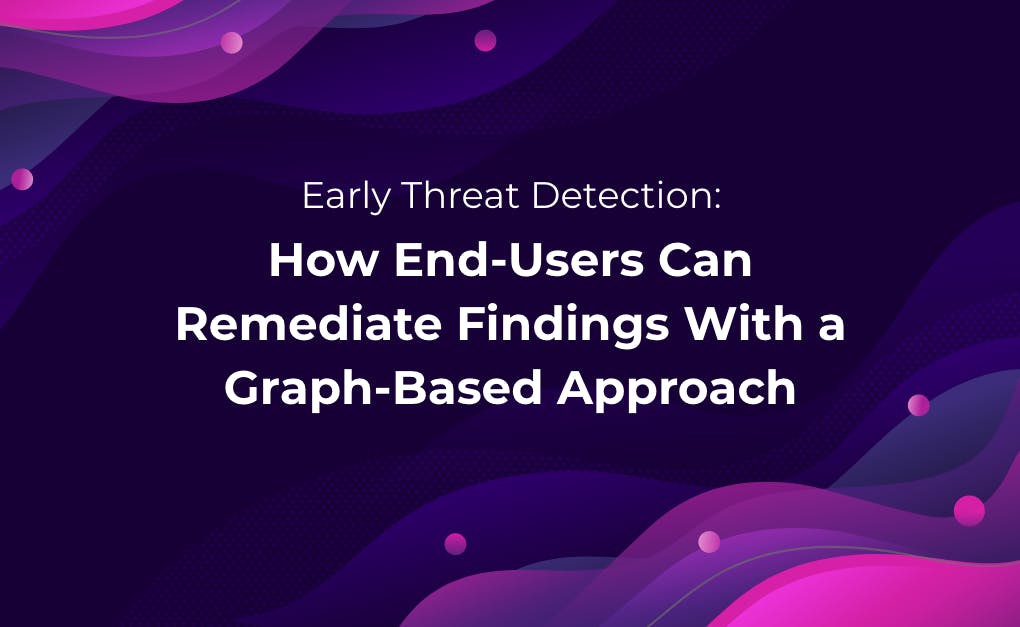Graph databases have taken center stage in data analytics as one of the most practical tools to evaluate large and discrete data sets effectively. They’re gaining popularity by helping in Big Data analysis, allowing analysts to represent the data intuitively.
When auditing your security systems, you should consider integrating graph-based security approaches into your existing infrastructure. We’ll explain some of the benefits of graph databases in threat detection and how you can employ them for your organization.
What is a graph database, and why is it important?
With its extraordinary ability to allow users to spot patterns easily and quickly, graph databases have extensive applications, including threat detectionthreat detection. This is an essential investment for businesses because attacks are only becoming harder to spot as fraudsters find sophisticated ways to outsmart enterprises. What’s more, increased adoption of IoT devices and cloud solutions widens potential attack vectors, adding complexity to the jobs of security experts.
The connected data visualization in the graph database helps uncover these intricate patterns more quickly, making fraud evasion harder. A graph database can be helpful for early fraud detection, as cybersecurity data from various sources is displayed visually and intuitively. Using graphs, charts, and real-time dashboards, security professionals can reduce clutter, making it simpler to spot anomaliesspot anomalies. Instead of digging via multiple logs or reports, using a graph database means the most vital threat indicators are more apparent.Instead of digging via multiple logs or reports, using a graph database means the most vital threat indicators are more apparent.
From a technical perspective, a graph database is a list designed to store and probe graphs efficiently compared to conventional databases. Instead of SQL, in graph databases, you can leverage query languages created upon graph theory concepts. That way, it’s possible to assign and refer to different variable types like edges, nodes, and even tracks in the graph, which makes it ideal for threat modeling.
You can hold billions of edges and nodes in one database, making it a productive ground for research of consumption tracking, social networks, customer interest maps, and cloud architectures. Many graph database platforms allow for developing and querying graphs and excel in their performance, scale, and easy-to-use graph query language.
When building your backend systems, it is important to build a system that supports graph databases. Consider hiring a backend developer who is a cybersecurity expert or who has data visualization experience. You can expect to pay at least $60 an hour for an experienced freelance backend developer in the United States, and working with freelancers can save you money instead of hiring full-time, in-house staff.
Continuous mapping of your cloud architecture
Mapping your cloud environment adds value in several ways, mainly with visualization and cloud risk management. You gain an in-depth understanding of your cloud architecture environment and can identify critical attack paths in the infrastructure.
To get a detailed view of your cloud environment, you need to map it. Essentially, cloud mapping is done by evaluating the connections between cloud assets. To develop your graph, it is vital for you to create a well-defined and explicit relationship table stating all the potential links among the assets.
Ideally, the graph should be cross-platform with assets from a multi-cloud infrastructure. So, for example, the data can be gathered from different cloud providers (GCP, Azure, AWS), various orchestration platforms (Mesosphere, Rancher, Kubernetes), and containerization platforms such as Docker third party IP addresses, etc.
Irrespective of the platform's origin, assets can be connected in the graph (e.g. a Kubernetes service exposes a load balancer like AWS). This makes the graph/chart topology an all-inclusive and complete resemblance of the customer's cloud architecture.
Integrating a graph-based approachIntegrating a graph-based approach
Graph databases enable enterprises to look beyond the discrete data and analyze the connections that relate to them. With a graph database, you can see your data in charts and more efficiently visualize opportunities and patterns to better anticipate threats.
Another thing that makes graph databases valuable for fraud prevention is their inherent promptness in linking and calculating relationships. Since the graph database relationships are treated with as much importance as the records of the database themselves, the engine navigating the connections between nodes can do so effectively, allowing millions of networks per second.
Graph databases let you process data and calculate risks much more quickly compared to today's existing relational databases, so they can identify threats and opportunities early on before the competition.
These solutions should always be paired with other security must-haves such as Virtual Private Networks (VPNs) to add layers of encryption to your cybersecurity infrastructure. According to cybersecurity expert Ludovic Rembert of Privacy Canada, VPNs are among the most effective tools for encrypting your online communications to stop threats:
"A VPN is a service that creates a virtual tunnel of encrypted data flowing between the user (that's you) and the server (that's the internet)," says Rembert. "A VPN hides your information from spies, hackers, snoops, and anyone else who might want to steal and monetize your information. Online privacy is a must, and a VPN is the best way to incorporate privacy into your virtual world. Other benefits include access to streaming content in other countries and hiding activity from government agencies."
A VPN will help protect your communications, and in the event of a breach, a graph database improves false detection, reduces false positives, eases investigations, and minimizes the overall investigation costs of threats and fraud.
Conclusion
Graphs equip cybersecurity professionals with the competitive edge of quick screening, enhanced turnaround time, high-quality recommendations, and minimal false positives, ultimately enabling them to alleviate cyber threats earlier. Consider implementing these solutions in your organization to make data analysis easier in threat detection and mitigation. To stay updated with the latest additions to Warden’s compliance automation stack, you can visit our blog. You can also fill up this formfill up this form to schedule a customized demo to see how Warden can help with all your cloud security needs.
P.S. This blog post was originally contributed by Ms.Shanice Jones. She is a Tech Content Creator, who actively writes for major corporate blogs in the tech sector.




